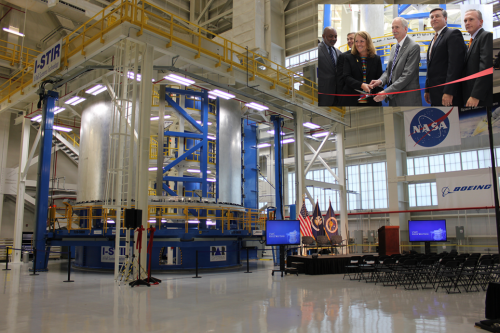
NEW ORLEANS, La — NASA’s Michoud Assembly Facility, or “MAF,” hosted an event introducing the new Vertical Weld Center, a friction stir welding machine that opens the door for the core stage of the agency’s new heavy-lift booster, the Space Launch System (SLS), to be built. Beginning shortly after 9 a.m. CDT on Friday, June 21, spokespersons from NASA and Boeing highlighted how this new instrument will revolutionize how the massive launch vehicle is produced and how it should lower the cost of constructing the boosters as well as shorten the time in which it is constructed.
Numerous luminaries attended the ceremony. NASA’s Associate Administrator for Human Exploration and Operations William Gerstenmaier was joined by the agency’s Space Launch System Program Manger Todd May, Boeing’s Space Launch Systems Vice President and Program Manager Ginger Barnes, and numerous other officials from both the public and private sectors who were on hand for the event and subsequent tour.
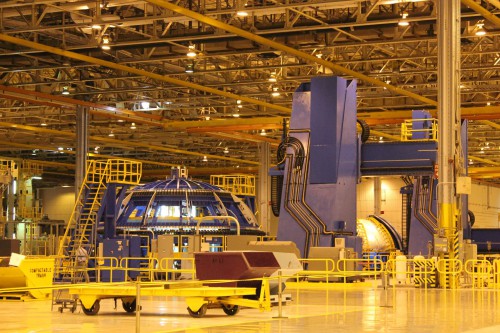
“We’ve had a chance to take a look at the Vertical Weld Facility that has just been assembled; the hardware is now here. This device will be used to actually weld the large barrel sections of both the oxidizer tank and the hydrogen tank for the SLS rocket,” Gerstenmaier said. “It’s pretty exciting to see this hardware come together, to see the beginnings of this program as we move forward. The teams are doing a tremendous job here; they’re making progress. I’m constantly telling them the most important thing we can do is to deliver the product on schedule and on budget and to look for innovative ways to do things, and, as you see here today, these folks are continuing to do that.”
As part of the ribbon-cutting ceremony, a tour of the expansive MAF was held. The size of the MAF became readily apparent as a tram was employed to ferry the various dignitaries, their attendants, and members of the press around the structure. The focus was clearly not on the past; the tour passed by one of the remaining shuttle external tanks and the equipment that helped produce the iconic rust-colored fuel tanks. Of greater interest this day were the assorted welders and machines that will begin constructing not only the SLS, but the Orion Multi-Purpose Crew vehicle as well.
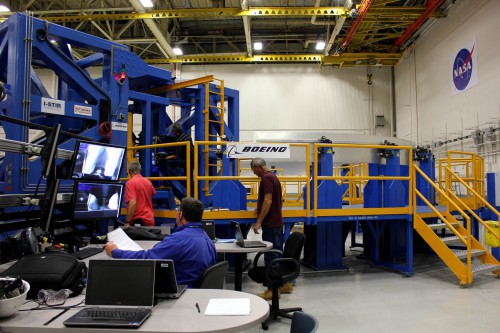
While the Vertical Weld Center was certainly the center of attention during Friday’s ceremony, it is but one of a number of high-tech instruments that will be utilized to construct both SLS and Orion. Some of the other tools reviewed on Friday included:
- The Circumferential Dome Weld Tool: Like the Vertical Weld Center, this tool is used to stitch components together for the Space Launch System. In this particular instrument’s case it will help produce the dome assemblies for SLS’ core stage cryogenic tanks.
- The Gore Weld Tool: While its name might sound a little ominous, this device uses conventional friction stir weld techniques to produce what are known as gore assemblies for the SLS booster (gore assemblies are aluminum dome segments which are comprised of segments that are welded together).
The two tools listed above comprise what is known as the Enhanced Robotic Weld Tool, which makes the dome structures used on SLS.
- The Segmented Ring Tool: This particular welding machine produces segmented support rings which both connect and provide necessary stiffness in between SLS’ various barrel and domes. Like the welding instruments previously detailed, it too utilizes a friction stir welding process.
- The Vertical Assembly Center, or “VAC”: This massive structure/device will assemble the assorted components mentioned above together into the tanks and assemblies which will be used on SLS. It will also validate the other machines’ handiwork by conducting nondestructive tests on the components after they are produced. Due to its size, this “tool” is perhaps better described as a structure. It will measure 170 feet tall and some 78 feet wide when it is completed next year.
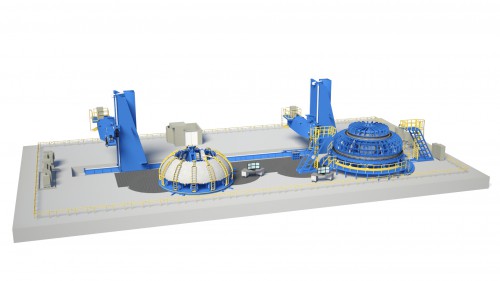
“This was a big day for us at Boeing. It’s a real statement about the progress that the program is making; it brings closer to fruition, to reality—both the SLS and the great exploration missions that it can take us on,” said Boeing’s Vice President and General Manager for Space Exploration John Elbon. “This is the vehicle that will take us to asteroids, the Moon, and then on to Mars. This is just one among many pieces of tangible evidence that prove the program is moving right along.”
For NASA, these “bleeding-edge” technological instruments, as one attendee referred to them, will serve to improve both the speed and efficiency in which crucial launch vehicle and spacecraft components can be produced.
“They’ve taken advantage of modern manufacturing, state-of-the-art concepts to try and lower our overall operating costs and make this a very affordable rocket,” Gerstenmaier said.
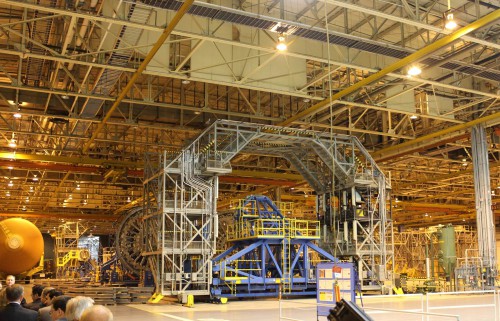
This is the first part in a week-long series of articles detailing events at NASA’s Michoud Assembly Facility and Stennis Space Center. Stay tuned to AmericaSpace for articles as well as photo and video features about recent events at these two locations.
Want to keep up-to-date with all things space? Be sure to “Like” AmericaSpace on Facebook and follow us on Twitter: @AmericaSpace




Who made this system?
Boeing.
Boeing purchased the systems. VWC was made by Odyssey Industries and PaR Systems (their subsidiary I-STIR Technology). ERWT and SRT were made by Futuramic Tool & Engineering and PaR/I-STIR. VAC is being made by ESAB.